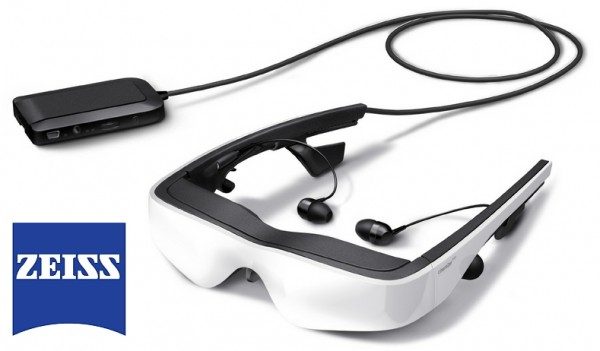Update: Another video from CeBIT has the rep stating the the head-tracking hardware runs an additional €100, but it still isn’t clear if this is third-party or being offered directly from Carl Zeiss. I’ve put the question out to Zeiss and will update when I hear back.
Carl Zeiss is working on an HMD called the Cinemizer which will be available this July, according to the company. The Cinemizer is a 3D-capable head mounted display with dual 870×500 OLED displays. My friends and boss Chippy, from UltrabookNews.com et al, was kind enough to record a hands-on video with the Cinemizer that Carl Zeiss showed off this week at CeBIT 2012. Jump into the article to take a look.
Sascha Pallenberg of NetbookNews.de is the guinea pig!
You’ll hear Chippy mention that this is a “$19,000 system…” but that figure includes much more than the Cinemizer HMD itself — I’m fairly certain that’s the entire setup (HMD, powerful desktop computer, head tracking hardware, etc.). As far as I can see, the head tracking system is not built-into the Cinemizer, but is instead probably added with third-party hardware such as the TrackIR 5 system.
The Cinemizer is actually available for pre-order and is currently priced at €649, which is around $861. That price makes the not-quite-HD Cinemizer a tough sell next to the 720p Sony HMZ-T1 ($799) and 1080p Silicon Micro Display ST1080 ($799, or $699 during pre-order period). However, the price listed includes a hefty 19% VAT, which might be avoidable if Zeiss distributes through other means. Without the 19% tax, the Cinemizer would be €525 or $696, which would make it a bit more affordable, but still not very attractive given the competition.
In the video can see Sascha walk through a series of virtual environments, and it is apparent from the emotion on his face that he is getting a visceral experience out of the simulation. At the end, he sums it all up when prompted about the experience:
Intense. Definitely different compared to the architecture version… especially with the sound effects; sound is so important, and if you would combine this with any kind of moving platform or something, that would be almost 99% real. You just need the image and decent sound, and maybe a little bit of physical feedback, and it works.
Sascha would be happy to know that such moving platforms exist — see more about omni-directional treadmills here.
The Cinemizer, which has a 30 degree field of view, differs from the ST1080 and HMZ-T1 in that it has a built-in battery which the company says will power the HMD for up to 6 hours.
We’ll keep our eyes out come July to see how the Cinemizer stands up to the competition. The more the merrier, I say!







